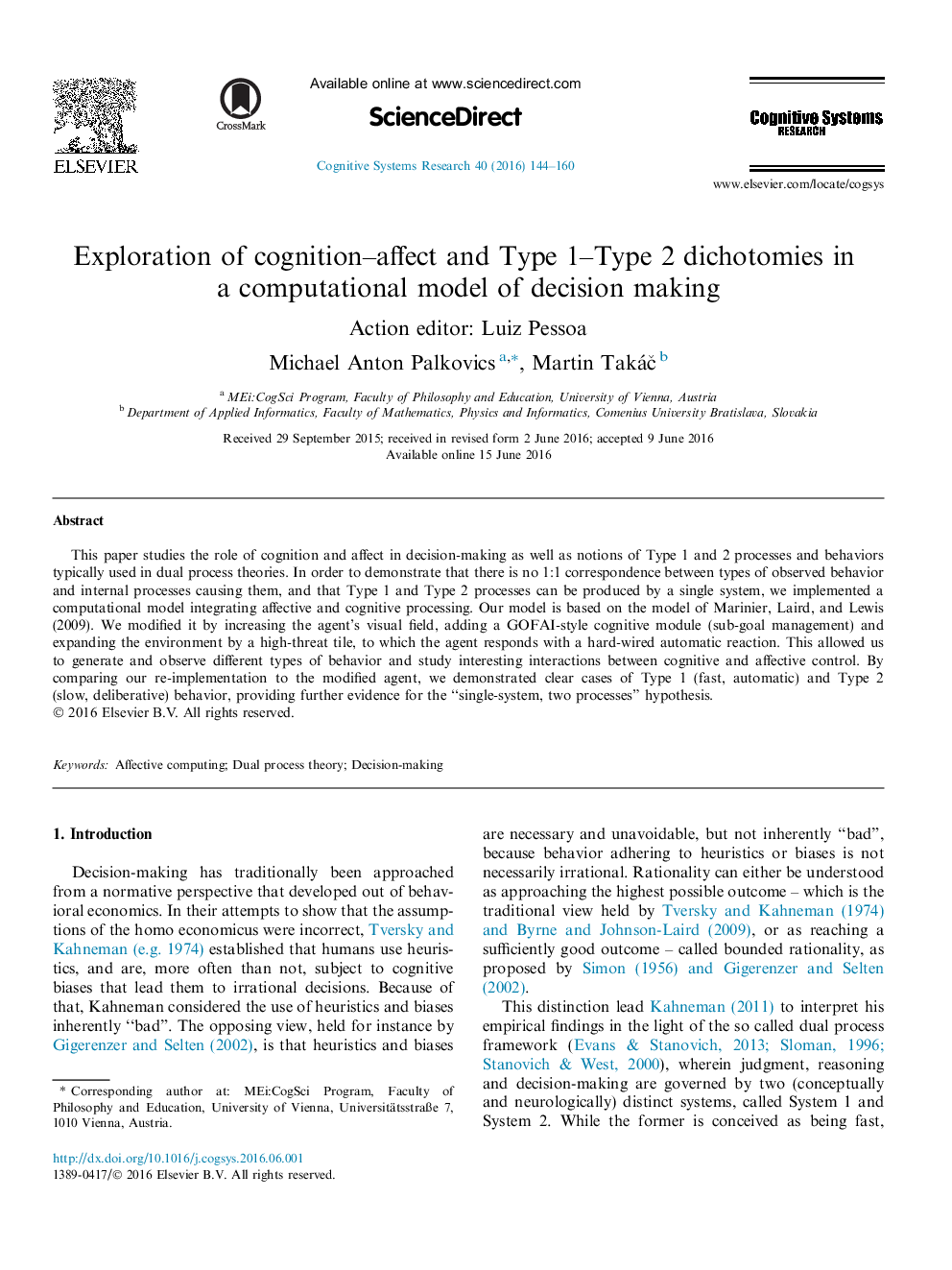| کد مقاله | کد نشریه | سال انتشار | مقاله انگلیسی | نسخه تمام متن |
|---|---|---|---|---|
| 378358 | 659140 | 2016 | 17 صفحه PDF | دانلود رایگان |
This paper studies the role of cognition and affect in decision-making as well as notions of Type 1 and 2 processes and behaviors typically used in dual process theories. In order to demonstrate that there is no 1:1 correspondence between types of observed behavior and internal processes causing them, and that Type 1 and Type 2 processes can be produced by a single system, we implemented a computational model integrating affective and cognitive processing. Our model is based on the model of Marinier, Laird, and Lewis (2009). We modified it by increasing the agent’s visual field, adding a GOFAI-style cognitive module (sub-goal management) and expanding the environment by a high-threat tile, to which the agent responds with a hard-wired automatic reaction. This allowed us to generate and observe different types of behavior and study interesting interactions between cognitive and affective control. By comparing our re-implementation to the modified agent, we demonstrated clear cases of Type 1 (fast, automatic) and Type 2 (slow, deliberative) behavior, providing further evidence for the “single-system, two processes” hypothesis.
Journal: Cognitive Systems Research - Volume 40, December 2016, Pages 144–160
